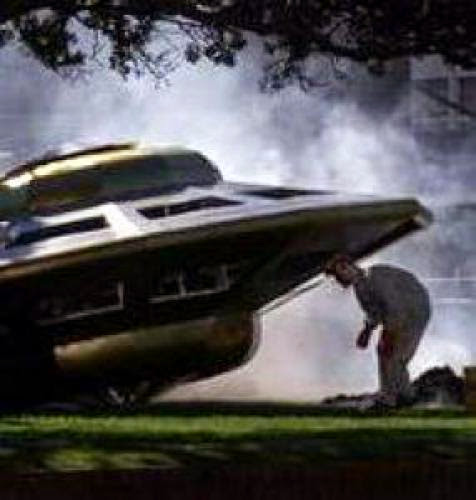
Yah boo hiss, here is Donald Menzel the first great pantomime villain of ufology, until that role was stolen from him by Phil Klass. In this first book Menzel sought rational explanations for UFO reports; in particular he was interested in the role of mirages, phenomena produced by ice crystals and other similar meteorological explanations. This didn't exactly enamour him to the ETH supporters, which of course included the 11, going on 12-year-old Peter Rogerson, and I didn't find his arguments very persuasive. After all I knew that flying saucers came from outer space because Aim'e Michel and Donald Keyhoe had told me they did, and Michel had some impressive looking maths - which I couldn't follow, but they surely proved Menzel was wrong. Actually much of the time, Menzel "was" wrong, for like a lot of other people who think they have THE answer to UFO reports Menzel took his ideas far too far. Thus the Skyhook balloon that Thomas Mantell chased to his death was a mock sun in Menzel's eyes, and he devised complex explanations involving mirages, although there were probably much simpler explanations. But on re-reading I noted that he didn't quite push the irage hypothesis as far as ufological folklore suggests that he did, and it is interesting to see that he was one of the first people to try and place modern UFO reports in a historical context - there are some fascinating historical snippets included in this book. There is, of course, the same literalism that also infects ETH believers. Thus Menzel argues the vision of Ezekiel was a sun dog, just as others have argued that it was tornado, plasma vortex, extra-terrestrial helicopter or a prevision of railway locomotives. That it is essentially a work of allegorical fiction is not considered by any of these authors. I rather suspect that, every bit as much as debunking the ETH, Menzel was actually motivated by using popular interest in flying saucers as a hook on which to hang a study of peculiar atmospheric phenomena aimed at a general audience. Within a decade Menzel had abandoned the mirages for a much more general sceptical approach, but they were resurrected decades later and in a much more extreme fashion by Steuart Campbell. The section on life on Venus and Mars now looks very quaint indeed, with Venus being granted warm oceans and how the dark areas seen on Mars "have proved to be vegetation". How many of our current scientific views will appear as na"ive, old fashioned and just plain wrong in another 60 years' time." - Peter Rogerson."






